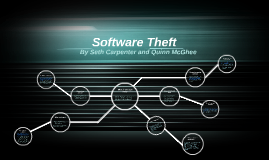
It occur when someone :
*steals software media
*intentionally erases programs
*illegally registers and/or activates a programs
*illegal copies a programs
Several types of protection have been introduced to safeguard software from being copied or cracked; however, with advanced hacking skills and sufficient efforts, it is actually possible to crack or bypass protection.
The different types of software theft are as follows:
- Type 1: This involves the physical stealing of a media that includes the software or the hardware.
- Type 2: This takes place when the service of a programmer is unexpectedly terminated by a company. The programs written by company programmers are exclusive to the companies they work for, but a few dishonest programmers deliberately wipe out or disable the programs written by them using the company infrastructure.
- Type 3: This happens if the software is compromised by the software vendors. This is the most prevalent type of software theft. It is also referred to as software piracy. It triggers unauthorized replication of copyrighted software.
- Type 4: This takes place when users make use of unauthorized activation codes or registration numbers. Many are using key generators (commonly known as keygens) to create and input serial keys at the time of registration. Keygens are sometimes helpful for generating activation codes as well. This helps users install the compromised software without legally acquiring it.
- Copy, duplicate or distribute software or its related documentation without the copyright owner's license or permission
- Install and use a purchased software on more than one computer concurrently except in cases where the license explicitly allows it
- Intentionally or unintentionally permit, persuade or pressure staff members to create or utilize illegally copied programs inside the organization
- Violate the copyright laws even if a friend, colleague or superior requests or compels someone to do it
- Lend software so that an illegal copy is made from it

No comments:
Post a Comment